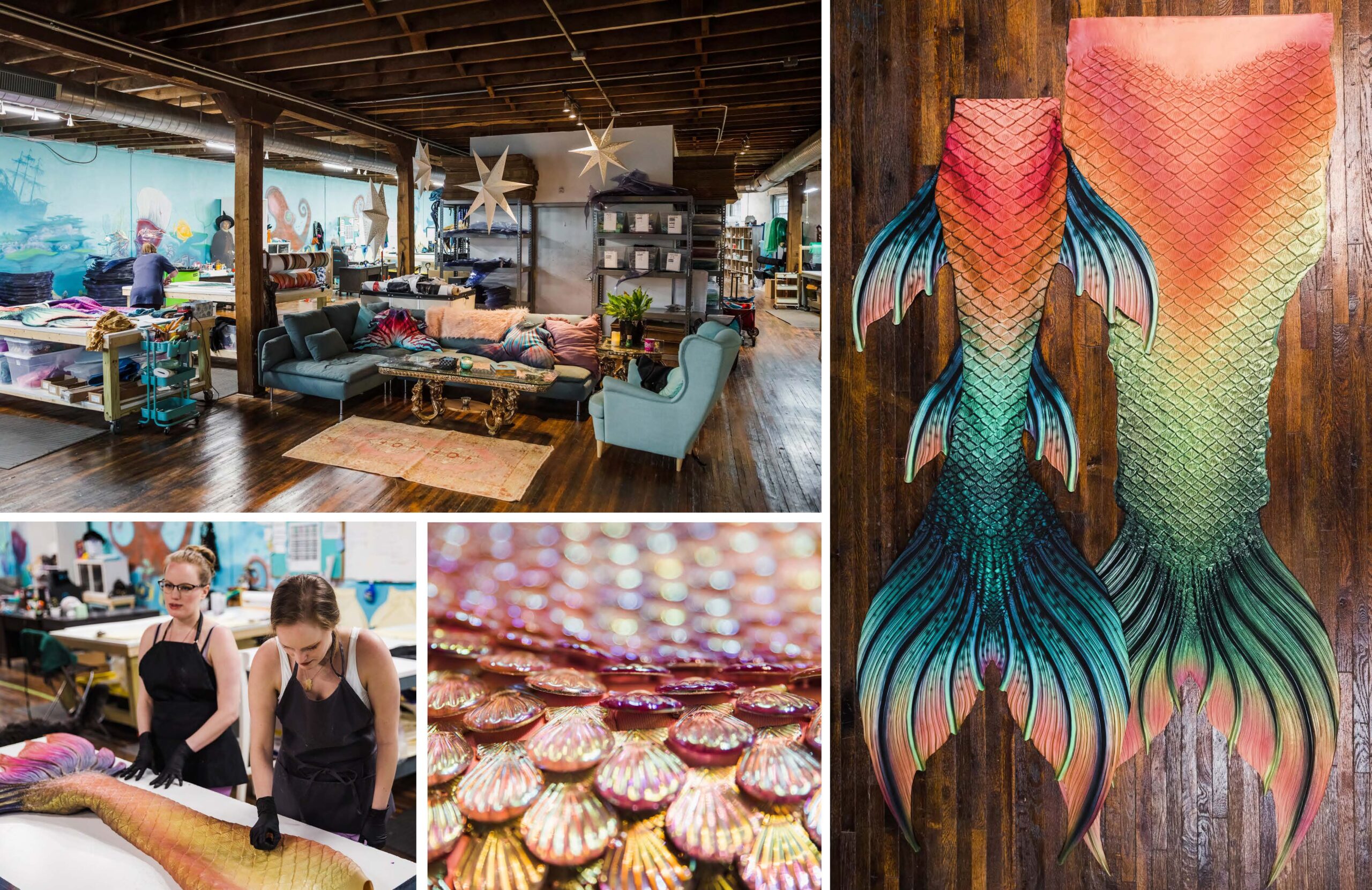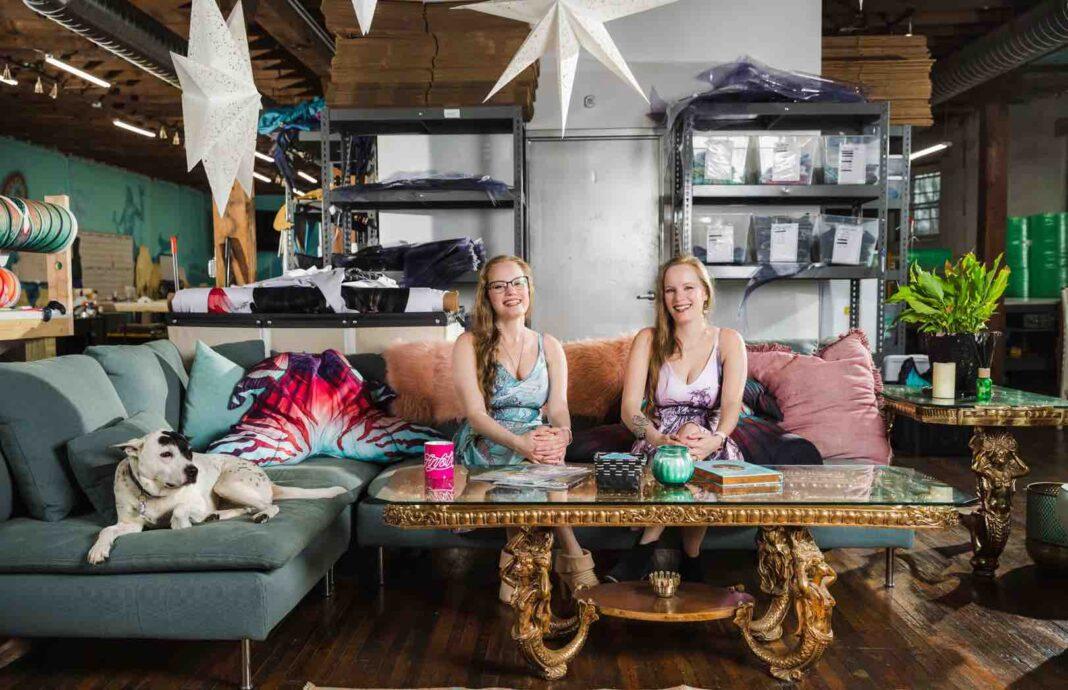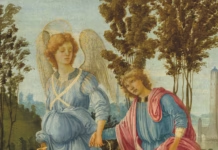Photography by LUNAHZON PHOTOGRAPHY
Ten years ago, when the Minnesota Renaissance Festival put out a call for tails for their brand-new half-lady, half-fish attraction, identical twins Abby and Bryn Roberts took note. Though the duo didn’t know the first thing about tail making, they both had a creative, entrepreneurial bent. Abby had a background in textiles and Bryn in the fine arts. They were nineteen and had made art together side by side since childhood. So why not? They decided to give it a shot and began experimenting with pouring silicone tails in their garage.
From those makeshift beginnings and after a few relocations, their Finfolk Productions has become a veritable mermaid empire. The moment you walk into their Lincolnton, North Carolina, headquarters—a massive old wooden warehouse that served as a grocery store in the 1930s and later an upholstery fabric mill—you enter a dream factory. Paper stars hang from the ceiling; the walls are covered in ships, manta rays, sea plants, and giant octopi; tails in various stages of creation cover the tables (and sometimes are a part of the tables); and the dress code seems to be mermaid-scale leggings in all shades of blue and purple. It’s awesome and whimsical and magical all at once. But make no mistake: This is a real business.
Back when the twins started out, would-be sea nymphs who wanted to look the part had few choices: They could look expensively fabulous with a custom silicone tail or make do with a cheaper spandex model. The sisters set out to fill the space between those options with fabric tails that were affordable but still gorgeous—and photorealistic.
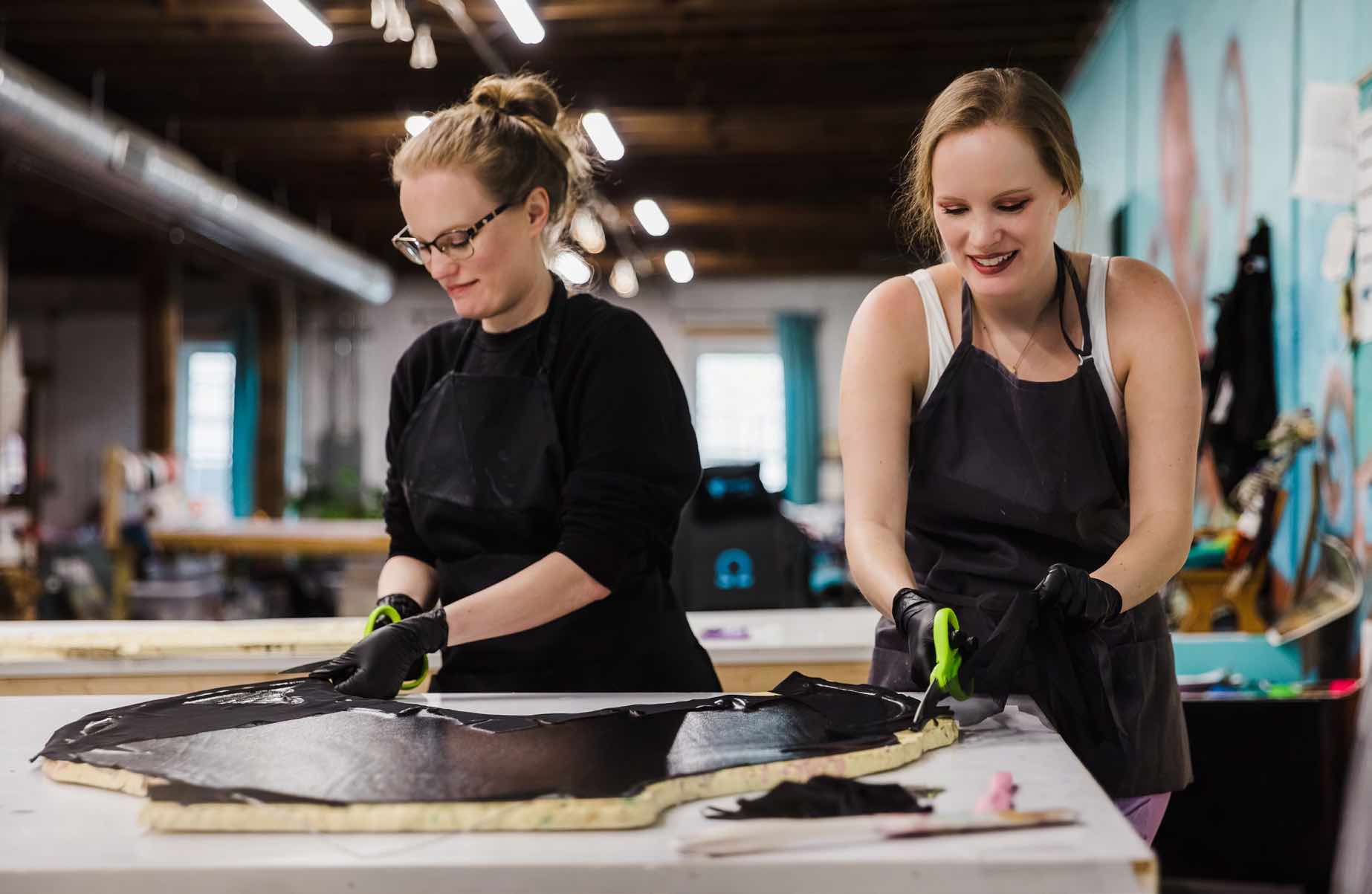
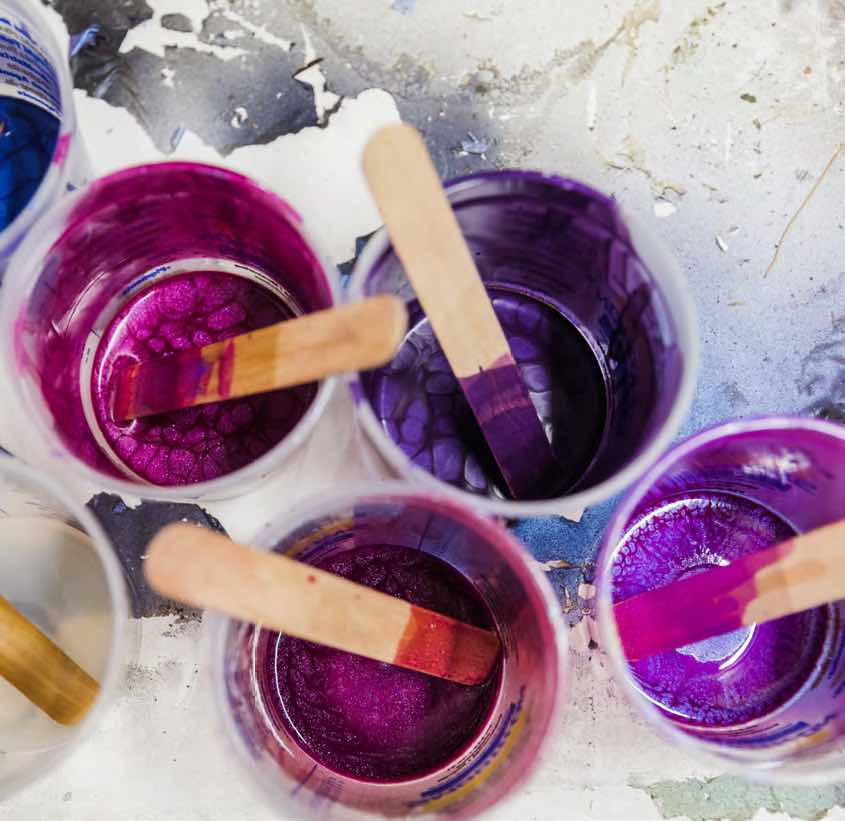
They developed an intricate process: First, they make a silicone tail and lovingly hand-paint it, then photograph it from every angle. After seaming the photos together in Photoshop, they make a full-size print on fabric, which is then cut and sewn in house. Their signature fabric tails retail for about $385, but they’ve recently developed a smaller, more economical “discovery tail” that uses the same silicone-based process and retails for just over $200. And of course, they also still make their custom, hand-sculpted ultra-realistic silicone tails. Whatever the tail, it is made in-house, from start to finish. They also sell the iridescent scales they used on their now-retired Mythic tails, and they encourage their customers to share their creations, which range from jewelry to sparkling mermaid eggs.
The twins have succeeded beyond their wildest fantasies. It’s thanks in part to their efforts that we’ve seen an explosion in the mermaid population. Mermaiding is now possible for people of all financial backgrounds and every walk (or swim) of life—every size and gender identification. This inclusivity was important to Abby and Bryn from the start. Their fabric tails have always run up to size 5X, and the sizing chart notes that 6XL and larger are available upon request. They even consulted members of the size-positive Society of Fat Mermaids and included its feedback in their designs and decision making. And as mermaiding has grown in popularity, they’ve had more male customers. Anyone can get a mermaid tail; anyone can be a mermaid.
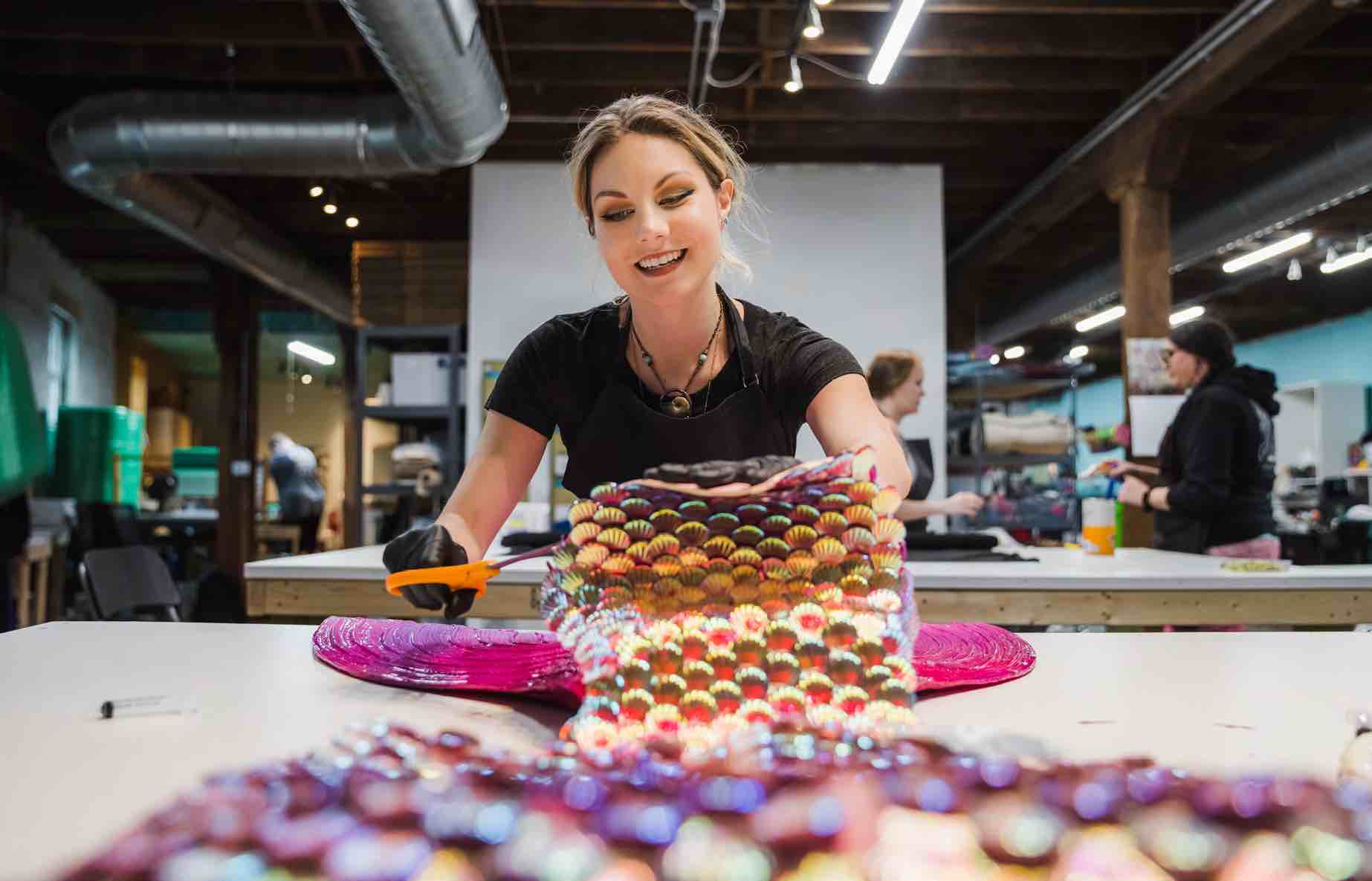
After working from garages and temporary studios, the twins purchased their warehouse five years ago. It was on the brink of being condemned, but the sisters were not the most attractive candidates for a bank loan. “We were young and in the mermaid business,” Abby says. “We’d walk in saying, ‘I promise this is a real job!’” Instead they relied in part on their “pod squad”—a passionate fan base and community on Facebook—to help fund the renovation. Members of the squad get special deals, first looks, and dibs on new offerings and can interact with other enthusiasts.
Mermaiding as a hobby—and a profession!—is much more mainstream and accessible now. Many professional mermaids talk about making their own tails as children out of trash bags or whatever fabric they could find, or tying their legs together with rope. Today parents can just buy a gorgeous little fabric tail or even just a monofin for would-be pint-size mermaids. They can even send them to mermaid camp. When the Roberts twins were first starting out and told people what they did, the typical response would be disbelief. But things have changed, they say. Now it’s “My daughter has a tail” or “I have a friend who does that—she loves it!”
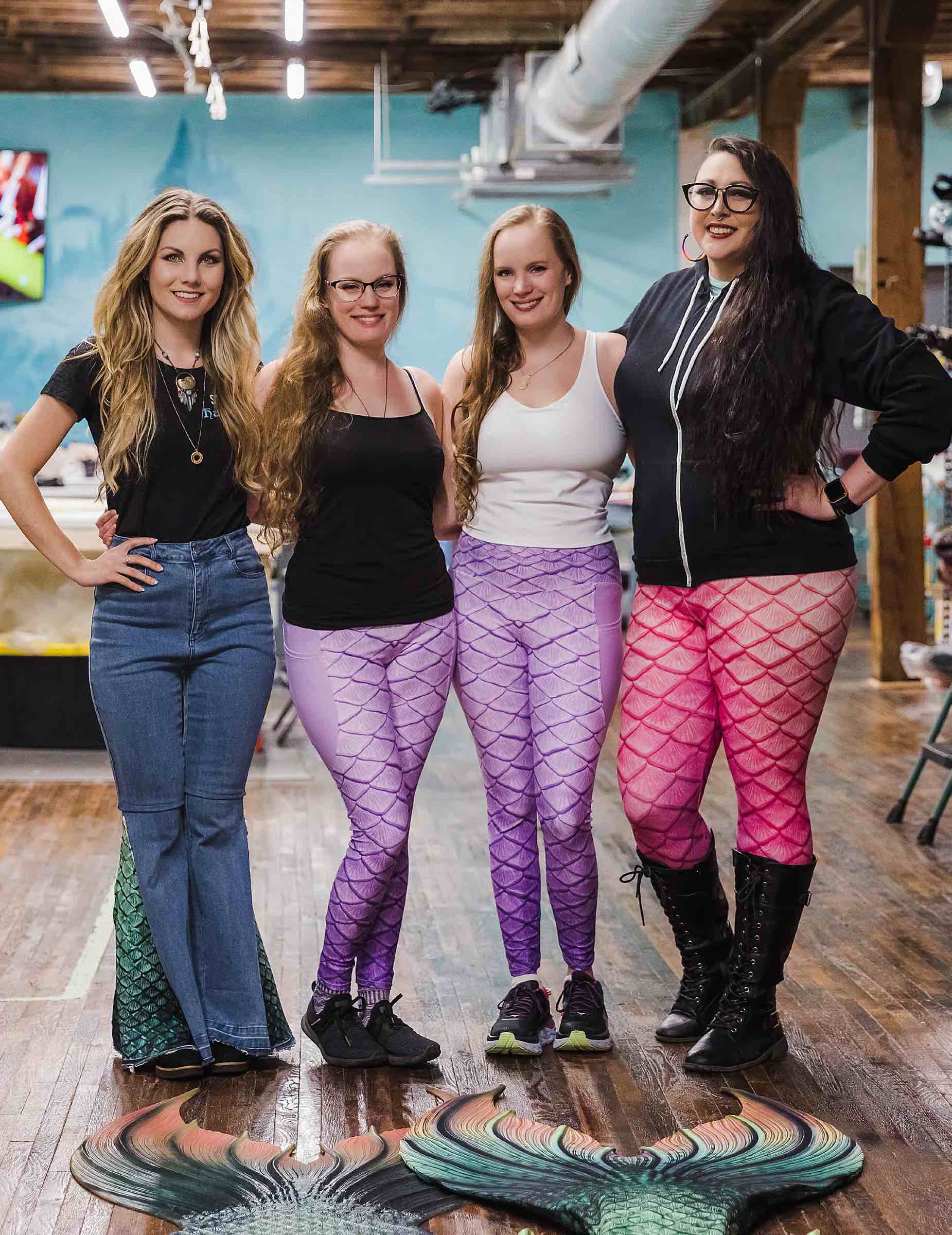
It’s not surprising that Finfolk is a fun place to work, given that they are not only making dreams come true but also working amid giant octopi, not to mention real-life four-legged magical creatures running around the joint on a daily basis. A typical day begins with a team meeting where everyone touches base and consults the giant to- do list and calendar that hang from the wall in a glorious (and surprising, perhaps) display of organization. Then everyone scatters to do their work, which may or may not involve donning a hazmat suit to mix paint or pouring molds or painting silicone in the bright, gleaming colors of tropical fish. Actually, the division of labor is pretty clear: Everyone on the nine-person team has their job. Bryn does all sculpting, taking the lead on silicone work and production, while Abby paints and is in charge of file work and printing. There’s even a dedicated sewing team.
What’s most magical about Finfolk, though, is the two sisters’ bond. From the time they were children, they have made art together, side by side—painting, drawing, coloring. Working together now, Abby says, feels like the “fulfillment of destiny.” In this sprawling warehouse that they saved and remade and that’s now filled with fabric and shiny scales and piles of orders from all manner of people who dream of the sea, “we literally create together every day. Making art together is what’s most important to us, and we feel really lucky that so many people love it.”
Visit Finfolk Productions online at finfolk.com. See more from LunahZon at lunahzon.com.
